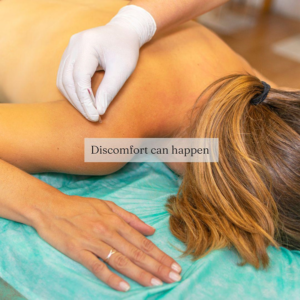Dry Needling – 7 Tips For First-Timers

Dry needling is a relatively new form of therapy that has gained popularity in recent years. It involves the use of thin needles to stimulate trigger points in the muscles, which can help relieve pain and improve mobility. If you are undergoing dry needling for the first time, it is essential to know what to expect and how to prepare. In this article, we will provide you with some tips for people undergoing dry needling in Singapore for the first time.
Choose a Qualified Practitioner
It is crucial to choose a qualified and experienced practitioner to perform your dry needling. Look for a practitioner with proper certification, training, and expertise in dry needling techniques. Ask for referrals from friends, family, or healthcare professionals, and do your research to ensure you find the right practitioner for your needs.
Discuss Your Medical History
Before starting dry needling, it is essential to discuss your medical history with your practitioner. Inform them of any underlying medical conditions, medications you are taking, and any allergies or sensitivities you may have. This will help your practitioner develop a safe and effective treatment plan. Also, do not attempt to lie or tell fallacious information about your future posture correction plan in Singapore because it will affect your health. Besides, doctors never judge their patients, so be as candid as possible.
Prepare for the Procedure
Wear loose and comfortable clothing to your appointment, as this will help your practitioner access the necessary trigger points. Avoid using any lotions, oils, or other topical treatments on the area being treated, as this can interfere with the needle’s insertion. It is also a good idea to eat a light meal before your appointment, as this can help reduce the risk of fainting or dizziness during the procedure.

Expect Some Discomfort
It is normal to experience some discomfort during dry needling, as the needles are inserted into trigger points in the muscles. However, this discomfort should be mild and tolerable. If you experience any severe or lasting pain, inform your practitioner immediately. They may need to adjust the treatment or stop the procedure altogether. Here, while the goal of sports taping and other physical therapy sessions is to relieve discomfort, there will be times you will expect minor pain.
Communicate with Your Practitioner
During the procedure, communicate with your practitioner and let them know if you are experiencing any discomfort or pain. They may need to adjust the needle placement or technique to ensure your comfort and safety. It is also essential to inform your practitioner if you experience any adverse reactions, such as dizziness or fainting.
Follow Your Practitioner’s Instructions
After the procedure, your practitioner may provide you with specific instructions to follow. This may include avoiding strenuous activity or applying heat or cold to the treated area. It is essential to follow these instructions carefully to ensure the best possible outcome. Also, be mindful of these things because missing them or not following them brings more harm than good after the exercise therapy sessions.
Be Patient
Dry needling is not a one-time solution and may require multiple sessions to achieve the desired results. It is essential to be patient and committed to the process and to work with your practitioner to develop a treatment plan that suits your needs.
In conclusion, dry needling can be an effective therapy for those struggling with pain and mobility issues. By following these tips and working with a qualified practitioner, you can ensure a safe and successful dry-needling experience. Remember to communicate with your practitioner, prepare for the procedure, and follow their instructions carefully. Visit The Movement Laboratory to learn more about their offerings to address discomfort.